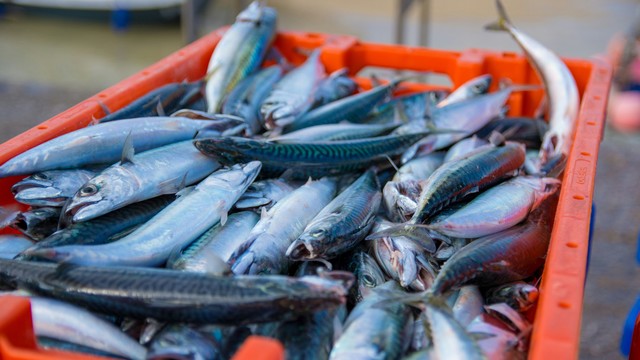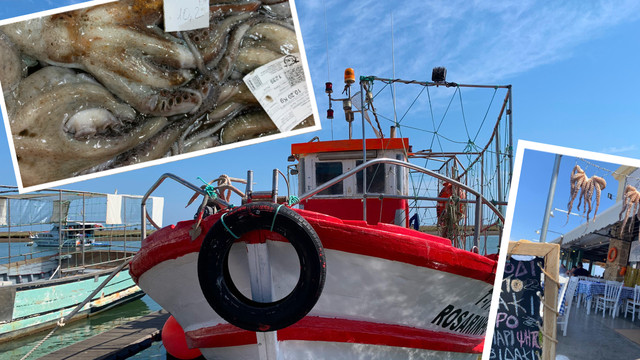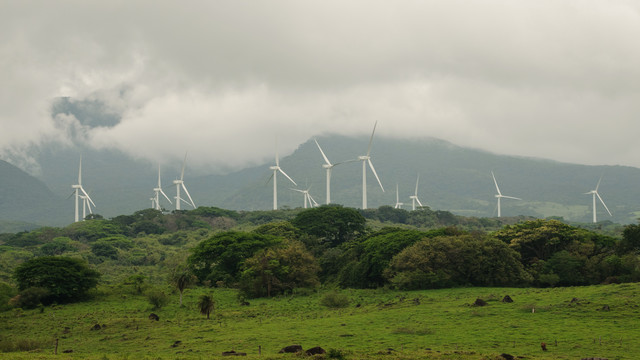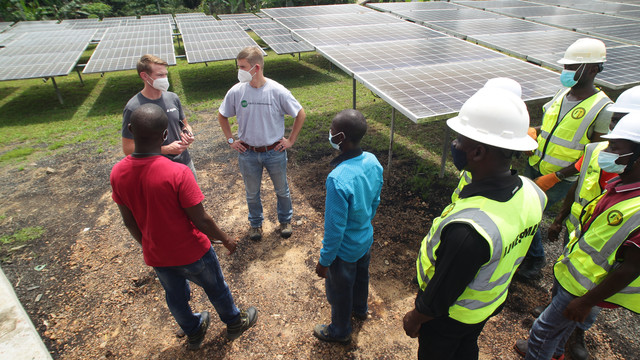Turning the tide: creating incentives for sustainable oceans
The Sustainable Development Goals (SDGs) are in place, but are policymakers ready and willing to bite? Dave Steinbach explains why now is the time to move from intent to action – and outlines a new approach on how to deliver SDG 14.


High-tech trawlers in the Faroe Islands. Ninety-five per cent of this tiny nation's exports is made up of fish (Photo: antonalfred, Creative Commons via Flickr)
In six months, policymakers will meet in New York for the 'Our Oceans, Our Future' conference, when they will discuss how to reduce the decline of the world's oceans. The conference is timely given the threat facing marine ecosystems: a recent study by the Food and Agriculture Organization of the United Nations (FAO) shows that nearly 90 per cent of global fish stocks are being fished either at maximum capacity or beyond biologically sustainable levels.
Fisheries are critical for global food security and poverty reduction – providing up to 820 million people with a direct or indirect income, and more than 3 billion with a critical source of protein.
But with depleting stocks, a doubling of per capita fish consumption over the past 50 years, and a global population expected to reach nine billion by 2050, there is an urgent need to find ways to sustainably manage global fisheries.
The 2030 Agenda for sustainable development includes a specific goal – Goal 14 – to conserve and sustainably use the oceans, seas and marine resources for sustainable development. In New York, representatives from government, international agencies, civil society, financial institutions, the scientific community, the private sector and others will discuss practical approaches to achieving SDG 14.
But this highlights an important challenge: one year after the SDGs were agreed, there have been few concrete approaches put forward to move discussions on delivering SDG 14 from rhetoric to reality.
Six key questions
In advance of this global event, we've been busy at IIED thinking through what it would look like to put SDG 14 into practice. A briefing paper provides an important first step to guide thinking in New York.
Through this research, we have developed an analytical framework (that can be viewed below or on IIED's Flickr site, where users can zoom into the image) that breaks down strategic decision-making on SDG 14 into six main areas:
- What mixture of policies and regulations need to be in place to achieve each of SDG 14's seven targets, and how can they be complemented by fiscal incentives to stimulate action?
- How can these instruments be designed in a way that achieves an optimal balance between economic, social and environmental outcomes? These could include an emphasis on higher revenue generation, distributional benefits to the poor or sustainable resource management, depending on the context
- How can the combination of policies, regulations and fiscal incentives be coordinated across different targets to achieve SDG 14 more efficiently and holistically? Can we draw on ecosystem or landscape approaches to align incentives to deliver SDG 14?
- What institutional support is needed to build capacity or improve the enabling environment and ensure that policies and fiscal incentives succeed?
- How can different actors support implementation at international, regional, national and sub-national scales? and
- How can efforts to achieve SDG 14 complement efforts to achieve other SDGs – for instance Goal 1 (no poverty) or Goal 5 (gender equality)?
Fiscal incentives at the forefront
Legal and regulatory instruments – for example policies on fishery management, or regulations on gear and total allowable catch – often receive the most attention in discussions on sustainable fisheries management.
Our research does something a little different. We emphasise the need to combine legal and regulatory instruments with the right financial incentives – the fiscal instruments – that will lead to successful outcomes for each of the seven SDG 14 targets.
In particular, our research outlines how taxes, subsidies and conditional transfers such as payment for environmental services or ecological fiscal transfers can play an enabling role in delivering SDG 14.
In order for fiscal policy to play a proactive role in achieving SDG 14, incentive structures must be aligned to strike an optimal balance between economic, social and environmental outcomes. This is currently far from the reality of life under water.
Researchers at the University of British Columbia have shown that 57 per cent of global subsidies to the fishery sector – a colossal US$20 billion per year – support efforts to increase fishing activity.
These capacity-enhancing subsidies have caused enormous environmental damage to global fish stocks and skewed the distribution of benefits away from poor fishers to the operators of industrial fleets. Much work remains to be done to reform fiscal incentive structures towards a more balanced distribution of economic, social and environmental benefits that lives up to the aspirations of SDG 14.
Next steps
We are still only at the beginning of the process of understanding the best ways to deliver the SDGs.
Clearly, fiscal instruments have a role to play in providing the necessary incentive structures – the very fact that mismatched financial incentives are contributing to the rapid depletion of the world’s oceans shows the power of fiscal policy. But so far there have been few approaches put forward to harness fiscal policy for more balanced outcomes.
Now, the next step is to test our framework and gather evidence on approaches to achieving SDG 14 in practice.
Dave Steinbach (dave.steinbach@iied.org) is a researcher in IIED's Climate Change research group.




